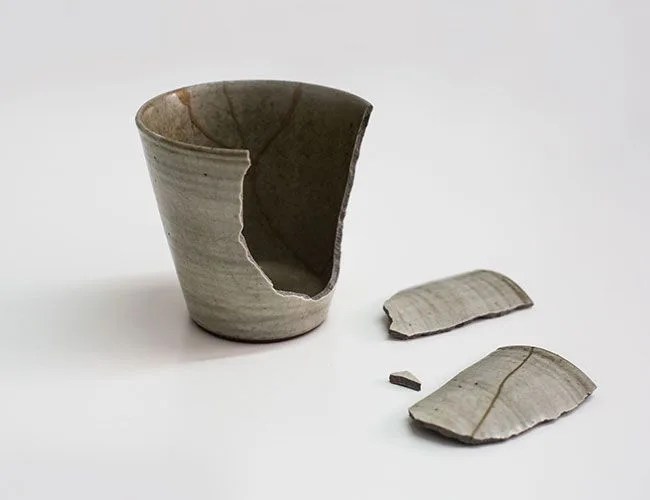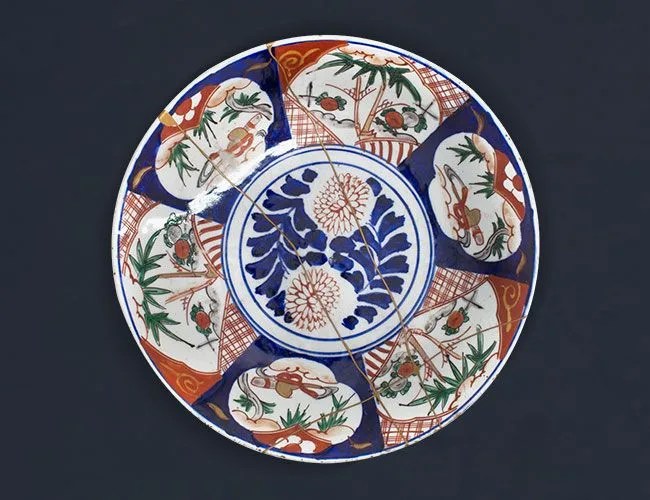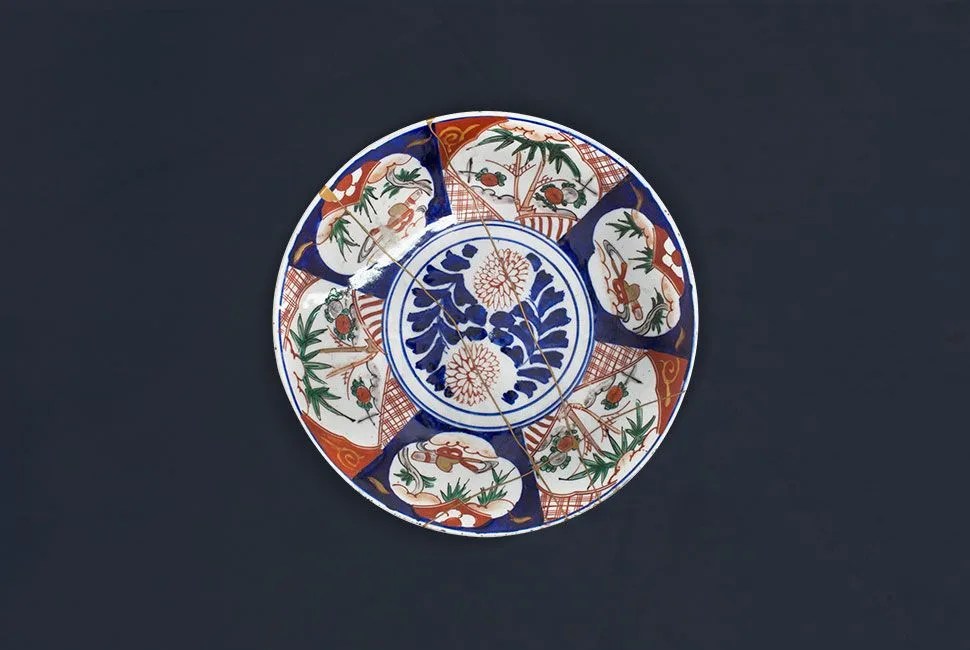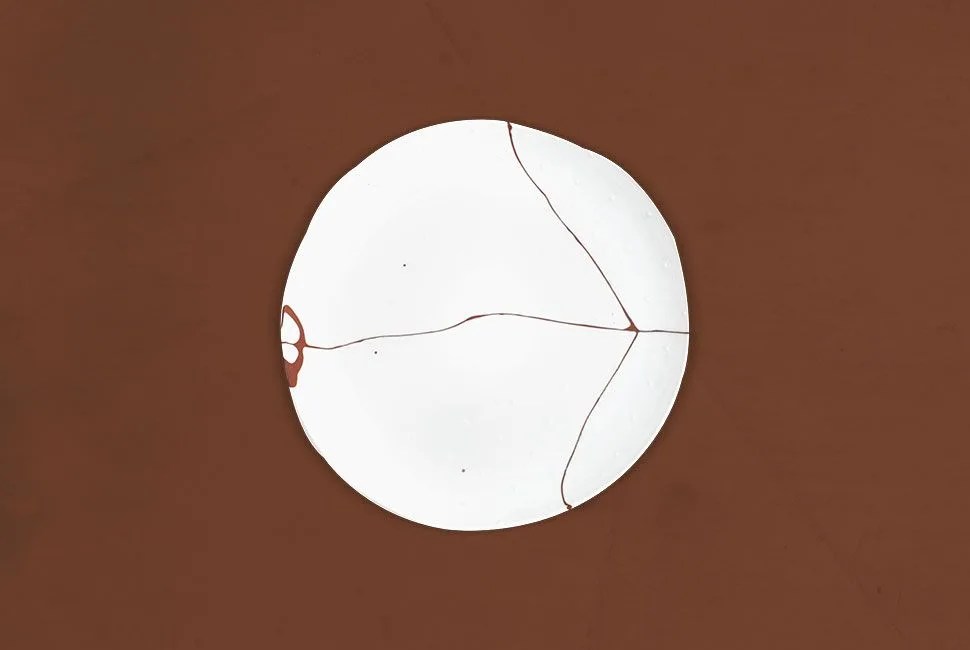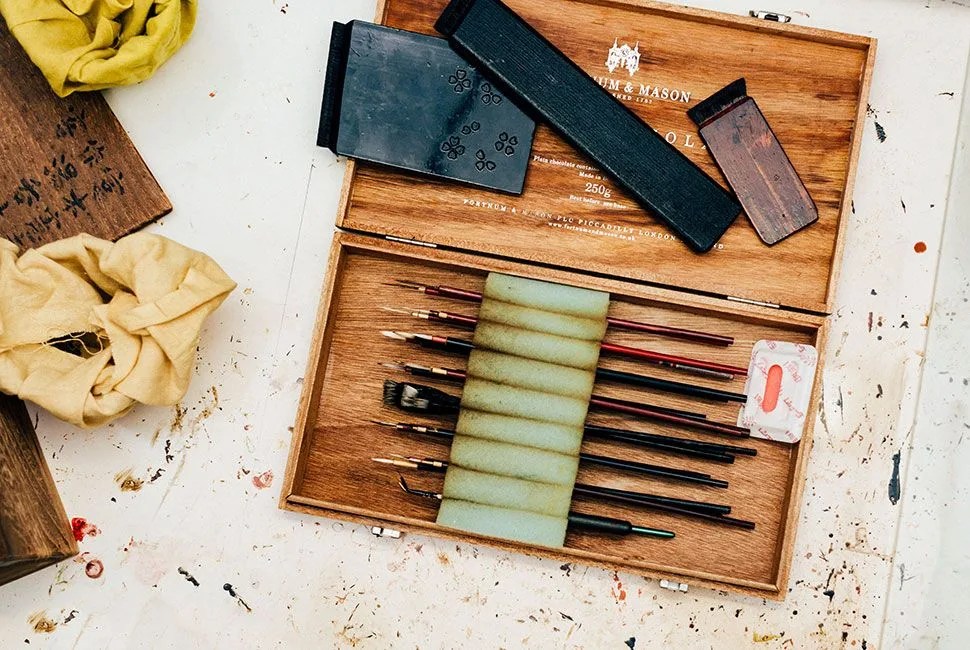4 photos
Gen Saratani’s design studio in Long Island City, New York is small, neat, warm. A fan hums in the corner. The light is soft. Decorations are sparse — a gold-lacquered zebra print here, a decorative urushi tree on a shelf there. A small scythe next to the tree.
Saratani is an expert in the practice of kintsugi, or gold joinery. He is one of the only full-time urushi, or gold lacquer, artists practicing the craft in its original and purest form outside of Japan. He is, by my research, the only one doing so in the US. Kintsugi, an offshoot of urushi, is the practice of repairing broken pottery by joining the cracks or broken pieces with gold lacquer. Saratani’s family has been practicing urushi and kintsugi for three generations. Japanese artists have been practicing it for centuries longer than that, but kintsugi is still relatively new in America.
He is one of the only full-time urushi, or gold lacquer, artists practicing the craft in its original and purest form outside of Japan.
Saratani unwraps a stack of gray tiles and lays them down on the white worktable. To the far left is plain slate. To the right, a polished, gold-ornamented slate. “Kintsugi is just one part of urushi, our technique to repair broken ceramics,” he explains, motioning to a shelf on which a small tree sits. “This is the urushi tree, and we scratch this tree to collect the sap.” This sap hardens when it’s exposed to the air, and it’s used with gold powder to decorate everything from ornamental boxes to trays. He covers the gold and lacquer mix with another layer of lacquer, then grinds the dried surface with a whetstone, yielding a polished surface of golden decoration.
The story that has been passed down in Saratani’s family is this: the daughter to the urushi technique, kintsugi, began with the ancient Japanese tea ceremony. The ceremony calls for participants to use only the best teacups and pots, but, if these items broke, there was no adequate technique to repair the items. So, Japanese artists started experimenting with urushi. They tried using the sap on its own to repair teapots and cups, but though the sap was strong, it dried brown — which was aesthetically unpleasing. So, the artists began applying the same gold powder that they used in decorative urushi techniques, and realized that this made the formerly-broken ceramics into new, beautiful, reborn items.
